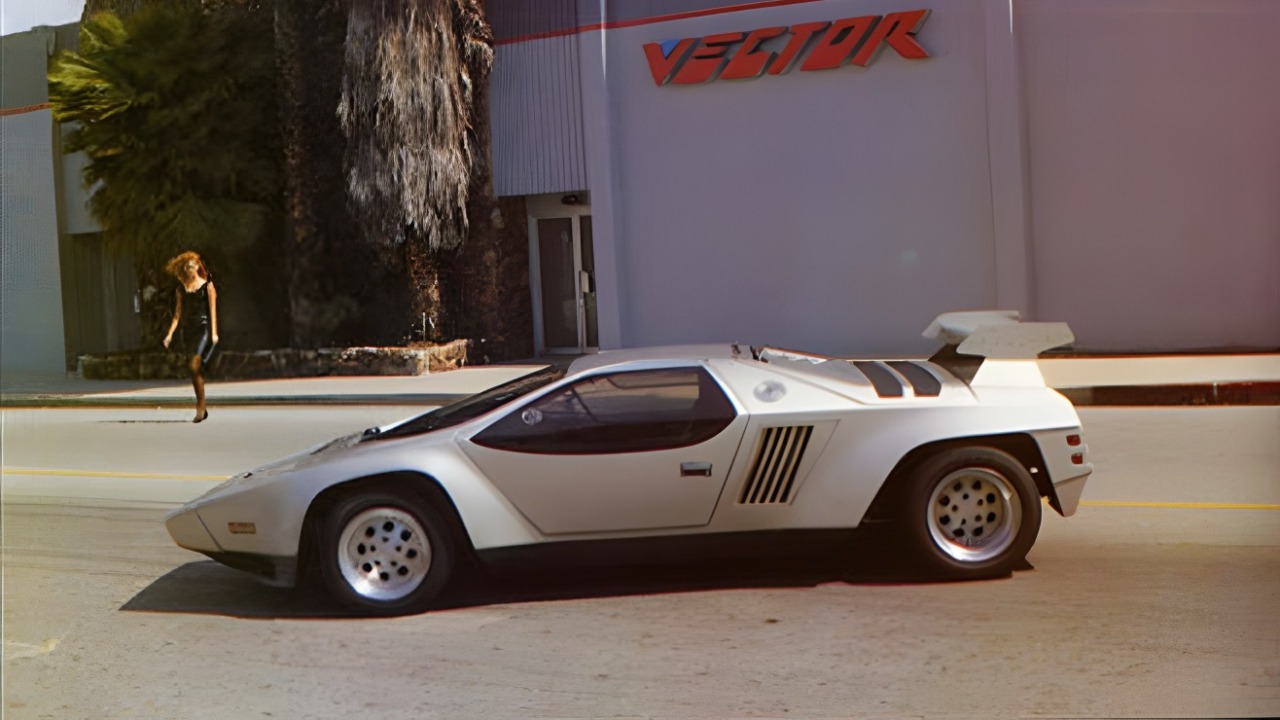
The Vector W8, America’s first production car to reach 200 MPH, is a testament to the innovation and ambition of the late 1980s. Despite its groundbreaking performance and design, the W8 has largely been forgotten due to limited production and financial difficulties at Vector Aeromotive Corporation. This supercar, which once rivaled European exotics, now stands as a forgotten icon in American automotive history.
The Vision Behind Vector Aeromotive
Vector Aeromotive Corporation was founded in 1978 by Gerald Wiegert, a visionary with a background in aerospace. Wiegert’s ambition was to create an American supercar that combined jet-age technology with the practicality of a road car. His early prototypes, such as the Vector W2 from 1976, showcased a wedge-shaped body and gullwing doors, setting the stage for the evolution of the W8. The initial hype around Vector Aeromotive positioned it as a potential rival to Lamborghini, a testament to Wiegert’s innovative vision.
Engineering the W8’s Powertrain
The heart of the W8 was a Rodeck-built, twin-turbocharged 6.0-liter DOHC V6 engine, derived from a Chevrolet 350 block. This powerhouse delivered 625 horsepower at 5,800 RPM and 562 lb-ft of torque. The drivetrain specifics included a 5-speed manual transmission from Tremec and a limited-slip differential, enabling the car to go from 0-60 MPH in just 4.2 seconds. Independent tests verified the W8’s top speed of 218 MPH, cementing its status as America’s first 200 MPH supercar.
Design and Aerodynamic Innovations
The W8’s design was as innovative as its performance. Its aluminum-intensive body had a 0.32 drag coefficient, and it featured pop-up headlights, scissor doors, and a low-slung chassis. Inside, the car boasted Recaro seats, digital instrumentation, and optional amenities like a 300-watt stereo, all aimed at blending luxury with speed. Despite its futuristic aesthetic and impressive features, only 17 road-legal units were produced between 1989 and 1993, contributing to its status as a supercar that time forgot.
Production Challenges and Limited Run
Despite its impressive design and performance, the W8 faced significant challenges. Financial difficulties at Vector Aeromotive, including investor disputes and a bankruptcy filing in 1993, halted production after just 17 cars. The high price tag of the base models, which cost $285,000 in 1990 (equivalent to over $600,000 today), also contributed to its exclusivity and obscurity. In the end, only two prototypes and 15 customer cars were completed, marking a challenging chapter in the history of America’s first 200 MPH supercar.
Performance Milestones and Testing
The W8 set several performance benchmarks, including a quarter-mile time of 12.1 seconds at 120 MPH. Publications like Car and Driver validated its official top speed in 1990. The car’s real-world handling was also impressive, with a curb weight of 3,000 pounds and an independent double-wishbone suspension tuned for high-speed stability. These feats confirmed the W8’s status as the first production car to reach 200 MPH, outpacing contemporaries like the Ferrari F40.
Legacy and Modern Rediscovery
Today, the surviving W8s are scattered in collections around the world. One such car sold for $550,000 at auction in 2019. Despite failed revival attempts like the 1996 M12, recent media interest has sparked a resurgence in appreciation for the W8. This underappreciated American engineering triumph is now being rediscovered and recognized for its role in supercar history, as highlighted in articles like Cars That Time Forgot: Vector W8.
More from MorningOverview